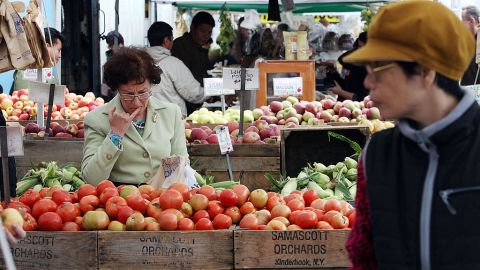Can This Be Causing the Rise in Obesity and Diabetes?

In 1998 the Firman Bear Report, based on research conducted at Rutgers University, revealed startling data concerning nutrient make-up in organic versus conventional farming. According to the research, tomatoes grown organically contained 1,938 milligrams of iron per hundred grams of dry weight, compared to a single gram in pesticide-laden tomatoes. Potassium was 148.3 mg vs 58.6. Spinach was equally lopsided: 1,584 mg of iron vs 19 mg; 71 mg of calcium vs 16.
A recent graduate of Rutgers, I was working as a reporter for a Princeton newspaper at the time. For my story I chatted with a local restauranteur, Himanshu Patel, whose wife held a nutrition degree. He was passionate about organic produce. Patel told me that in the fifties American farmers had 22 inches of topsoil to work with, compared to an average of nine inches in the nineties. He concluded: “If it ain’t in the tomato, it ain’t in the sauce.”
The nutritional benefits of the food we eat is not the result of varied nutrients we can isolate at will, just as our brain is an emergent system: the combination is what matters. Sure, the hippocampus might be where memories are processed, but without the rest of the system it’s rather useless. Yet nutrient composition of food is relevant. If you’re iron deficient and reach for a tomato, soil makes a difference.
A 2004 study of forty-three garden crops revealed that nutrients suffered greatly over the last half-century. Iron, yes, but also vitamin C, calcium, and protein levels were down. The blame was placed on a familiar culprit: monocropping, a popular agriculture method that yields large amounts of a single crop, season after season, which certainly depletes the soil. Yet some were skeptical this told the whole story.
Many of the people I talked to in the Princeton region knew the nutritional value of food was plummeting. Yet my story predates a 2002 paper written by Princeton University postdoctoral fellow Irakli Loladze, now a math biologist at Bryan College of Health Sciences in Lincoln, Nebraska. He argues that rising carbon dioxide levels directly affect human nutrition, a stance that was widely rejected at the time. But times have changed.
When Politico recently contacted a number of nutrition experts about this topic, most were perplexed or ignorant of the premise. Loladze speculates that carbon dioxide levels in the atmosphere are increasing carbohydrate levels in plants, which has a direct effect on our nutritional intake as well as obesity and diabetes levels.
What Loladze is hypothesizing is effectively a biological version of environmental climate change. We might think we’re eating a balanced, plant-heavy diet while we’re actually starving our bodies of the micronutrients we need. At the same time we’re boosting sugar intake thanks to the uptick in carbohydrates, a fascinating and frightening example of interdependence. The faces of climate change might be polar bears and ice calving, but the proof is much closer to home. Inside of our homes, in fact.
Which means the products in your crisper are nutritionally more like dehydrated fruit and vegetables than the freshly picked produce of old. A 2014 study investigating crops in Japan, Australia, and the United States found unnerving drops in iron, zinc, and protein. Loladze responded with his own paper. In it the editor notes that two out of every five calories around the planet come from rice and wheat, and the malnutrition occurring from elevated carbon dioxide levels “lead to reduced growth in childhood, to a reduced ability to fight off infections, and to higher rates of maternal and child deaths.”
Loladze uses data to ask questions he believes nutrition experts and governmental agencies need to be pondering:
Will rising CO2 concentrations—one of the most certain and pervasive aspects of global climate change—alter the quality of crops and wild plants? Will the CO2-induced stimulation of carbohydrate synthesis increase the carbohydrates-to-minerals ratio in crops? Can such shifts in crop quality affect human nutrition and health?
Give the data he compiles, it is apparent that a spike in carbohydrates is not doing our bodies any good. Is this the root cause of increased obesity and type 2 diabetes we’re witnessing in America and, increasingly, around the world? As stated, the problem is multifactorial. But given the research emerging from this field, we might be in the midst of chronic changes in our physiology.
During the reporting of my 1998 story, I chatted with Traute Ringwald, who owned a local natural food store. She puy at least part of the blame on the customer:
The consumer really has done a great injustice to farmers by not supporting them and making them triple crop. So now they don’t replace any of the nutrients in the soil because they must sell their product. But they don’t realize that there are 98 nutrients, not three.
If Loladze is correct, the blame falls on all of us. Humans are not separate from the environment, and how we treat it has a direct effect on our health. The alarming upward trend of obesity and diabetes levels over the last century makes it obvious that we’re not treating our planet, or our health, very well.
—
Derek is the author of Whole Motion: Training Your Brain and Body For Optimal Health. Based in Los Angeles, he is working on a new book about spiritual consumerism. Stay in touch on Facebook and Twitter.





